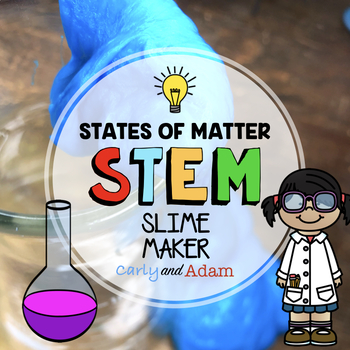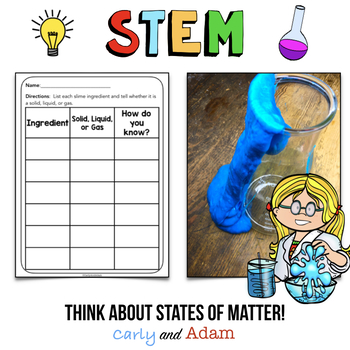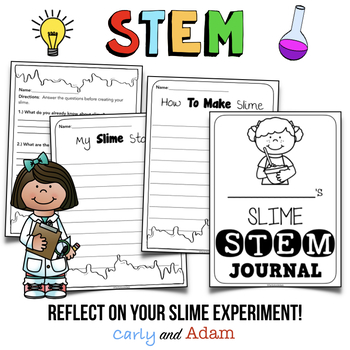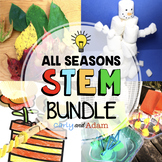Slime STEM Activity States of Matter Integration
- PDF
- Easel Activity
What educators are saying
Also included in
- Integrate STEM in your classroom all year! Includes 60+ STEM Challenges!The Entire year of STEM Challenges is an excellent tool for a STEM Club or a weekly STEM activity in your classroom! These engaging Elementary STEM challenges align with the NGSS (Next Generation Science Standards). STEM ProjectPrice $99.97Original Price $196.50Save $96.53
- Integrate STEM in your classroom with this awesome Seasonal STEM Bundle!Watch your students laugh as they learn with engaging STEM challenges for each season. These activities are perfect for helping students learn to work cooperatively in small groups or growing on their own.Students plan, design,Price $30.00Original Price $52.50Save $22.50
- Engage your kids and students at the end of the school year and during the summer months with Summer STEM challenges!This bundle includes Fishing for Math Fact Fluency Summer STEM Activity, Summer Slime STEM Activity, Father's Day Toolbox STEM and Writing Activities, and Fourth of July Air-powered FPrice $10.00Original Price $14.50Save $4.50
Description
Integrate STEM in your classroom with Slime Maker STEM Project.
Create the coolest slime experiment that every student is sure to love! This is great for teaching about states of matter!
Students think about how certain materials are liquid and solid. When materials are mixed together, they can create something completely different!
A brief writing activity is included for students to write out how they created their slime and write about their experience with slime!
Aligns with NGSS.
Includes:
- Teacher Instructions (with photos)
- Student Instructions (with photos)
- States of Matter Ingredient Worksheet
- STEM Journal
- NGSS Standards
- TpT Digital Version for Distance Learning with Google Classroom
Digital Activity:
To use Easel for Distance Learning, select "Open in Easel" on this listing. Works with computers, laptops, chromebooks, ipads, and tablets.
Materials List:
- Baking Soda
- Glue
- Contact Solution
- Plastic Cup and Spoon (for mixing)
- Food Coloring (optional)
What Teachers are saying about Slime Maker STEM Activity:
"My kids are obsessed with slime so we are looking forward to reviewing scientific method and creating slime. " -Emily L.
"My students LOVED that they got to make slime. Perfect for our unit on states of matter. I also liked the addition of the journal to keep track of student learning. Thank you!"
"Our science unit is States of Matter and we did this for the 100th day of school activity. It was fun and educational at the same time :) Thank you!" -Amanda L.
"Excellent. Can't wait to use this with my STEM Club. They are eager to make slime" -Stacy D.
Amazing resource for STEM club, STEM Teachers, parents who love hands-on learning, and elementary teachers who want to create a hands-on educational environment in their classroom!
Follow us!









